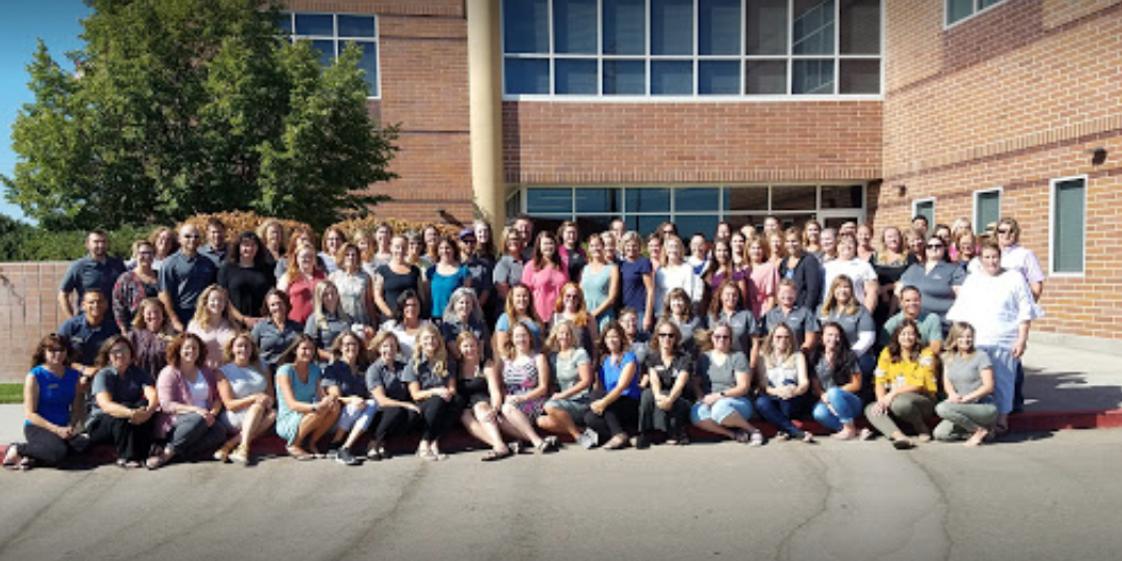Serving 1,541 students in grades Kindergarten-12, Idaho Virtual Academy ranks in the bottom 50% of all schools in Idaho for overall test scores (math proficiency is bottom 50%, and reading proficiency is bottom 50%).
The percentage of students achieving proficiency in math is 26% (which is lower than the Idaho state average of 41%). The percentage of students achieving proficiency in reading/language arts is 53% (which is lower than the Idaho state average of 55%).
The student-teacher ratio of 29:1 is higher than the Idaho state level of 17:1.
Minority enrollment is 22% of the student body (majority Hispanic), which is lower than the Idaho state average of 27% (majority Hispanic).
Quick Facts (2025-26)
- School Type: Online School/Charter School
- Grades: Kindergarten-12
- Enrollment: 1,541 students
- State Accredited: Yes
- Live Instruction: No
- Rolling Enrollment: No
- Student-Teacher Ratio: 29:1
- Minority Enrollment: 22%
- Graduation Rate: 75-79% (Btm 50% in ID)
- Overall Testing Rank: Bottom 50%
- Math Proficiency: 26% (Btm 50%)
- Reading Proficiency: 53% (Top 50%)
- Science Proficiency: 35% (Btm 50%)
- Source: National Center for Education Statistics (NCES), ID Dept. of Education
School News
- - 01/24/2023Students, parents, and teachers cheered on the Capitol steps as they celebrated national school choice week.The rally aimed at honoring the diverse education opportunities offered in the state.
Top Rankings
Idaho Virtual Academy ranks among the top 20% of public schools in Idaho for:
Category
Attribute
Percent Eligible For Free Lunch
School Overview
Idaho Virtual Academy's student population of 1,541 students has declined by 8% over five school years.
The teacher population of 53 teachers has grown by 6% over five school years.
School Type
Grades Offered
Grades Kindergarten-12
(Exclusively virtual)
(Exclusively virtual)
Total Students
1,541 students
Gender %
Total Classroom Teachers
53 teachers
Year Founded
2002
State Accredited Program
Yes
Personalized Content
No
Live Instruction
No
Rolling Enrollment
No
Flexible Class Schedule
No
Accelerated Offerings
No
Classes for Credit/Part Time Options
No
Dedicated College Counselor
Yes
Tutoring/Mentoring
No
Community Clubs/Activities Offered
No
School Calendar
School Motto
Building a community of engaged learners.
School Rankings
Idaho Virtual Academy ranks within the bottom 50% of all 704 schools in Idaho (based off of combined math and reading proficiency testing data).
The diversity score of Idaho Virtual Academy is 0.37, which is less than the diversity score at state average of 0.43. The school's diversity has stayed relatively flat over five school years.
Overall Testing Rank
#471 out of 704 schools
(Bottom 50%)
(Bottom 50%)
Math Test Scores (% Proficient)
26%
41%
Reading/Language Arts Test Scores (% Proficient)
53%
55%
Science Test Scores (% Proficient)
35%
41%
Student-Teacher Ratio
29:1
17:1
American Indian
1%
1%
Asian
1%
1%
Hispanic
15%
20%
Black
n/a
1%
White
78%
73%
Hawaiian
n/a
n/a
Two or more races
5%
4%
All Ethnic Groups
Graduation Rate
75-79%
80%
Eligible for Free Lunch
46%
26%
Eligible for Reduced Lunch
21%
8%
School Statewide Testing
School District Name
Extracurriculars
Total ExtracurricularsTotal Extra-curric.
7 extracurriculars
ExtracurricularsExtra-curric.
Club or Organization:
Cooking ClubCrafts & Sewing
Debate TeamEsports Team
LeadershipLego Builders
Social Sessions
Source: National Center for Education Statistics (NCES), ID Dept. of Education
Profile last updated: 02/09/2025
Frequently Asked Questions
What is Idaho Virtual Academy's ranking?
Idaho Virtual Academy is ranked #471 out of 704 schools, which ranks it among the bottom 50% of public schools in Idaho.
What schools are Idaho Virtual Academy often compared to?
Idaho Virtual Academyis often viewed alongside schools like Inspire Virtual Charter School, Idaho Technical Career Academy by visitors of our site.
What percent of students have achieved state testing proficiency in math and reading?
26% of students have achieved math proficiency (compared to the 41% ID state average), while 53% of students have achieved reading proficiency (compared to the 55% ID state average).
What is the graduation rate of Idaho Virtual Academy?
The graduation rate of Idaho Virtual Academy is 75-79%, which is lower than the Idaho state average of 80%.
How many students attend Idaho Virtual Academy?
1,541 students attend Idaho Virtual Academy.
What is the racial composition of the student body?
78% of Idaho Virtual Academy students are White, 15% of students are Hispanic, 5% of students are Two or more races, 1% of students are American Indian, and 1% of students are Asian.
What is the student-teacher ratio of Idaho Virtual Academy?
Idaho Virtual Academy has a student ration of 29:1, which is higher than the Idaho state average of 17:1.
What grades does Idaho Virtual Academy offer ?
Idaho Virtual Academy offers enrollment in grades Kindergarten-12 (Exclusively virtual).
What school district is Idaho Virtual Academy part of?
Idaho Virtual Academy is part of Idaho Virtual Academy Inc. School District.
School Reviews
Review Idaho Virtual Academy. Reviews should be a few sentences in length. Please include any comments on:
- Quality of academic programs, teachers, and facilities
- Availability of music, art, sports and other extracurricular activities
Recent Articles

How Public Schools Support Students on Free / Reduced-Lunch Programs
Explore how U.S. public schools support students eligible for free or reduced-price lunch through nutrition, academic, and wraparound services in 2025.

Hidden Costs of Public Schools: Fees, Supplies & Extras
Explore the hidden costs in public schools鈥攆ees, supplies, extracurriculars鈥攁nd how parents can plan for them in 2025.

Public School Funding 2025: What Families Should Know
Essential insights on public school funding in 2025鈥攈ow it works, what鈥檚 changing, and what families should know to stay ahead.










